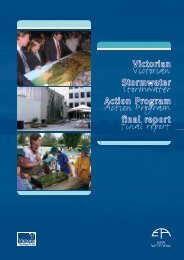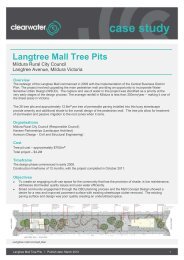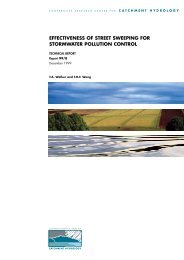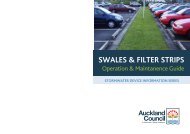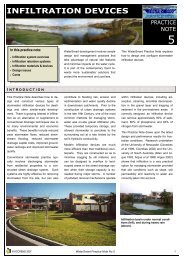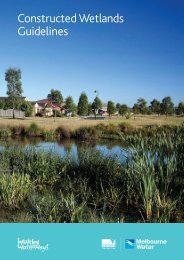Hydraulic performance of biofilter systems for stormwater management
Hydraulic performance of biofilter systems for stormwater management
Hydraulic performance of biofilter systems for stormwater management
You also want an ePaper? Increase the reach of your titles
YUMPU automatically turns print PDFs into web optimized ePapers that Google loves.
Figure 7 : K lab deep ini vs. Kf s shallow – white triangle, system with low initial hydraulic conductivity, black<br />
square, <strong>systems</strong> with high initial hydraulic conductivity<br />
This decrease can be explained by sediment deposition at the surface. However,<br />
final hydraulic conductivities are still relatively high (K fs shallow = 127 mm/h, n=17), and<br />
likely to be adequate to ensure good pollutant removal <strong>per<strong>for</strong>mance</strong>. This observation<br />
may be either because the <strong>systems</strong> are only partially clogged, or because creation <strong>of</strong><br />
macropores is having some effect in creating flow through the media, possibly even at<br />
the surface (<strong>for</strong> example, at the base <strong>of</strong> plant stems, where growing, senescence and<br />
even stem movement due to wind, may cause ‘breaking up’ <strong>of</strong> any clogging layer)<br />
(Figure 8).<br />
K lab deep ini = 241<br />
K fs shallow = 127 mm/h<br />
Figure 8 : Schematic representation <strong>of</strong> the evolution <strong>of</strong> the behaviour <strong>of</strong> bi<strong>of</strong>ilters with high initial K<br />
22




